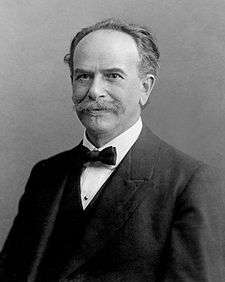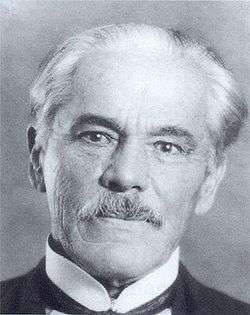Biological anthropology

|
| Anthropology |
|---|
|
Key theories |
|
Lists
|
|
Biological anthropology, also known as physical anthropology, is a scientific discipline concerned with the biological and behavioral aspects of human beings, their related non-human primates and their extinct hominin ancestors.[1] It is a subfield of anthropology that provides a biological perspective to the systematic study of human beings.
Branches
As a subfield of anthropology, biological anthropology itself is further divided into several branches. All branches are united in their common application of evolutionary theory to understanding human morphology and behavior.
- Paleoanthropology, the study of fossil evidence for human evolution, studying extinct hominid and other primate species to determine the environment into which modern humans evolved, and how our species dispersed to eventually cover much of the earth's land mass.
- Human biology is an interdisciplinary field of biology, biological anthropology, nutrition and medicine, concentrates upon international, population-level perspectives on health, evolution, anatomy, physiology, molecular biology, neuroscience, and genetics.
- Primatology, the study of non-human primate behavior, morphology, and genetics. Reasons via homology and analogy to infer how and why similar human traits evolved.
- Human behavioral ecology, the study of behavioral adaptations (foraging, reproduction, ontogeny) from the evolutionary and ecologic perspectives, (see behavioral ecology). Human adaptation, the study of human adaptive responses (physiologic, developmental, genetic) to environmental stresses and variation.
- Evolutionary psychology, a theoretical approach in the social and natural sciences that examines psychological structure from a modern evolutionary perspective.
- Bioarchaeology, the study of past human cultures through examination of human remains recovered in an archaeological context. The examined human remains usually comprises bones, but may include preserved soft tissue. Researchers in bioarchaeology combine the skillsets of human osteology, paleopathology, and archaeology, and often consider the mortuary context of the remains in the final analysis.
- Paleopathology is the study of disease in antiquity. This study focuses not only on pathogenic conditions observable in bones or mummified soft tissue, but also on nutritional disorders, variation in stature or the morphology of bones over time, evidence of physical trauma, or evidence of occupationally derived biomechanic stress.
History

Scientific physical anthropology began in the 18th century with the study of racial classification.[2] In the 1830s and 1840s, physical anthropology was prominent in the debate about slavery, with the scientific, monogenist works of the British abolitionist James Cowles Prichard (1786–1848) opposing[3] those of the American polygenist Samuel George Morton (1799–1851).[4] The first prominent physical anthropologist, the German physician Johann Friedrich Blumenbach (1752–1840) of Göttingen, amassed a large collection of human skulls.[5]
In the latter 19th century French physical anthropologists, led by Paul Broca (1824–1880), focused on craniometry while the German tradition, led by Rudolf Virchow (1821–1902), emphasized the influence of environment and disease upon the human body.[6] American thought has evolved during the “four-field approach”, the inclusive research of the four sub-fields of Archaeology, Linguistics, Physical Anthropology and Cultural anthropology, based upon studies on the remains of the North American hominin clade.[7]
In 1897 Columbia University appointed Franz Boas (1858–1942) as a physical anthropologist for his expertise in measuring schoolchildren and collecting Inuit skeletons. From his German education and training, Boas emphasized the mutability of the human form and minimized race (then a biology synonym) in favor of culture. Ales Hrdlicka (1869–1943), a physician, studied physical anthropology in France under Leonce Manouvrier before working at the Smithsonian Institution from 1902.
Earnest Hooton (1887–1954), a Classics PhD from the University of Wisconsin, entered anthropology as an Oxford Rhodes Scholar under R. R. Marett and the anatomist Arthur Keith. Harvard University hired Hooton in 1913; he trained most American physical anthropologists of the coming decades, beginning with Harry L. Shapiro and Carleton S. Coon,[8] and struggled to differentiate physical anthropology from racism.[9] There was much intellectual continuity with Germans such as Eugen Fischer, Fritz Lenz and Erwin Baur.[10]
In 1951 Sherwood Washburn, a Hooton alumnus, introduced a "new physical anthropology."[11] He changed the focus from racial typology to concentrate upon the study of human evolution, moving away from classification towards evolutionary process. Anthropology expanded to comprehend paleoanthropology and primatology.[12]
Notable biological anthropologists
- John Lawrence Angel
- George J. Armelagos (born 1936)
- William M. Bass
- Jane E. Buikstra (born 1945)
- Robert Corruccini
- Raymond Dart
- Egon Freiherr von Eickstedt
- Linda Fedigan
- A. Roberto Frisancho (born 1939)
- Jane Goodall
- Earnest Hooton
- Aleš Hrdlička
- Dian Fossey
- Birute Galdikas
- Alice Roberts
- Colin Groves
- Yohannes Haile-Selassie
- Ralph Holloway (born 1935)
- William W. Howells
- Donald Johanson
- Robert Jurmain
- Louis Leakey
- Mary Leakey
- Richard Leakey (born 1944)
- Frank B. Livingstone (1928–2005)
- Owen Lovejoy
- Russell Mittermeier
- Desmond Morris
- Douglas W. Owsley (born 1951)
- David Pilbeam
- Kathy Reichs (Kathleen Joan Toelle Reichs)
- Pardis Sabeti (born 1975)
- Eugenie C. Scott (born 1945)
- Meredith Small
- Phillip V. Tobias (born 1925)
- Douglas H. Ubelaker (born 1946)
- Sherwood Washburn (1911–2000)
- David Watts
- Tim White (born 1950)
- Milford H. Wolpoff (born 1942)
- Richard Wrangham
See also
- Anthropometry, the measurement of the human individual
- Craniometry
- Ethology
- Evolutionary biology
- Evolutionary psychology
- Paleontology
- Physiognomy
- Primatology
- Sociobiology
References
- ↑ Jurmain, R, et al (2015), Introduction to Physical Anthropology, Belmont, CA: Cengage Learning.
- ↑ Marks, J. (1995) Human Biodiversity: Genes, Race, and History. New York: Aldine de Gruyter.
- ↑ Gail E. Husch. "Something Coming: Apocalyptic Expectation and Mid-nineteenth-century American painting - by Gail E. Husch - ...the same inward and mental nature is to be recognized in all the races of men.". Google Books. Retrieved February 12, 2017.
- ↑ "Exploring U.S. History The Debate Over Slavery, Excerpts from Samuel George Morton, Crania Americana". RRCHNM. Retrieved February 12, 2017.
- ↑ "The Blumenbach Skull Collection at the Centre of Anatomy, University Medical Centre Göttingen". University of Goettingen. Retrieved February 12, 2017.
- ↑ "Rudolf Carl Virchow facts, information, pictures". Encyclopedia.com. Retrieved February 12, 2017.
- ↑ "Four Fields Approach - Our teaching is rooted in the traditional American, four-field approach to anthropology". Miami University. Retrieved February 12, 2017.
- ↑ Spencer, Frank (1997). History of Physical Anthropology. New York: Garland Pub. pp. 499–500. ISBN 0-8153-0490-0.
- ↑ Hooton, E. A. (1936) “Plain Statements About Race”, Science, 83:511–513.
- ↑ Baur, E., Fischer, E., and Lenz, F. (1931) Human Heredity, Eden Paul and Cedar Paul, translators. New York: Macmillan,
- ↑ Washburn, S. L. (1951) “The New Physical Anthropology”, Transactions of the New York Academy of Sciences, Series II, 13:298–304.
- ↑ Haraway, D. (1988) “Remodelling the Human Way of Life: Sherwood Washburn and the New Physical Anthropology, 1950–1980”, in Bones, Bodies, Behavior: Essays on Biological Anthropology, of the History of Anthropology, v.5, G. Stocking, ed., Madison, Wisc., University of Wisconsin Press, pp. 205–259.
Further reading
- Michael A. Little and Kenneth A.R. Kennedy, eds. Histories of American Physical Anthropology in the Twentieth Century, (Lexington Books; 2010); 259 pages; essays on the field from the late 19th to the late 20th century; topics include Sherwood L. Washburn (1911–2000) and the "new physical anthropology"
- Brown, Ryan A and Armelagos, George, "Apportionment of Racial Diversity: A Review", Evolutionary Anthropology 10:34–40 2001
- Modern Human Variation: Models of Classification
- Redman, Samuel J. Bone Rooms: From Scientific Racism to Human Prehistory in Museums. Cambridge: Harvard University Press. 2016.
External links
| Look up somatotypes in Wiktionary, the free dictionary. |
- American Association of Physical Anthropologists
- British Association of Biological Anthropologists and Osteoarchaeologists
- Human Biology Association
- Canadian Association for Physical Anthropology
- Homo erectus and Homo neanderthalensis reconstructions – Electronic articles published by the Division of Anthropology, American Museum of Natural History.
- Istituto Italiano di Antropologia
- Journal of Anthropological Sciences – free full text review articles available
- Mapping Transdisciplinarity in Anthropology pdf
- Fundamental Theory of Human Sciences ppt
- American Journal of Human Biology
- Human Biology, The International Journal of Population Genetics and Anthropology
- Economics and Human Biology
- Laboratory for Human Biology Research at Northwestern University
- The Program in Human Biology at Stanford
- Society for the Study of Human Biology Symposium Series
- Scottish Qualifications Authority
- Society for Nordish Physical Anthropology
- Academic Genealogical Tree of Physical Anthropologists

